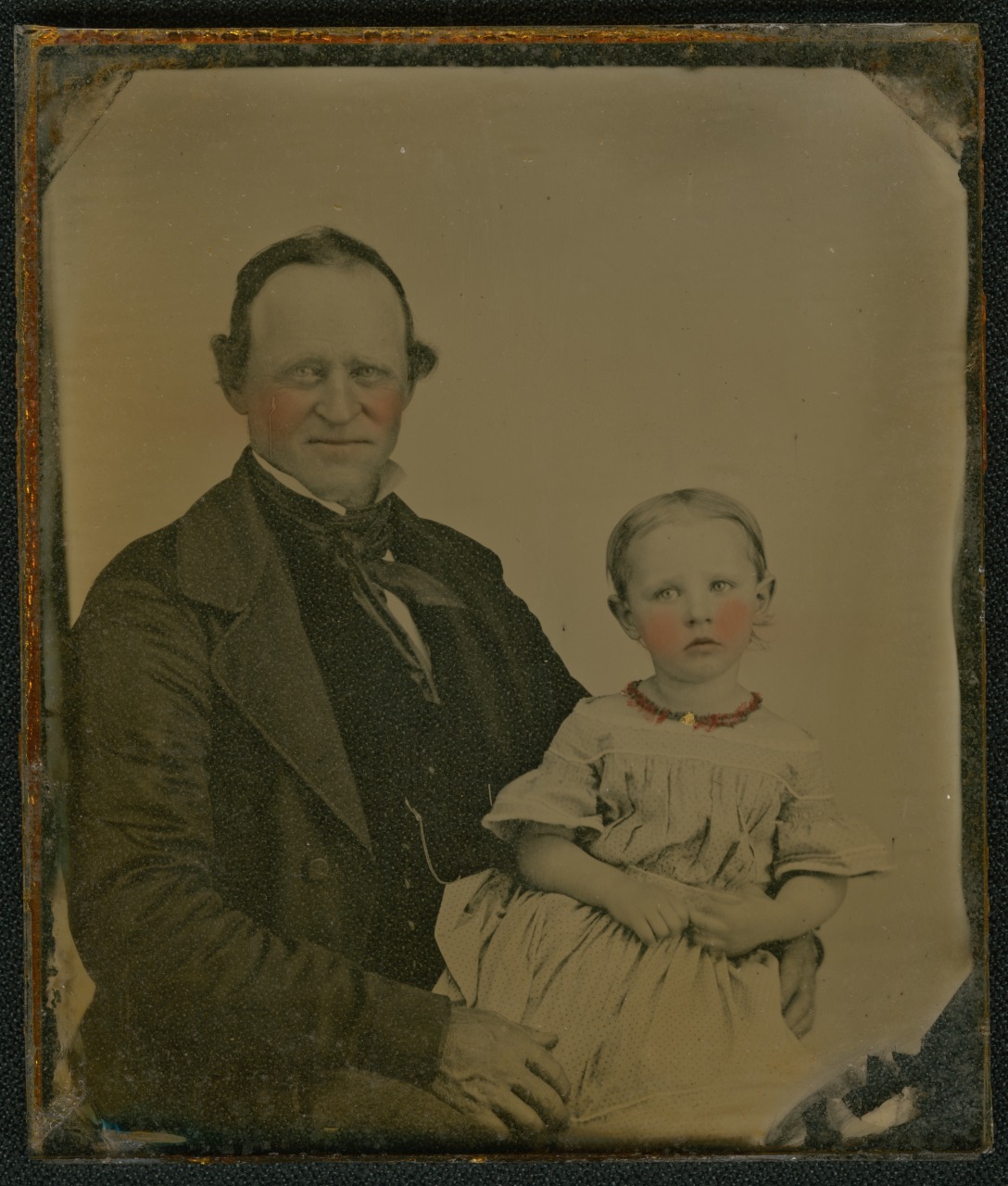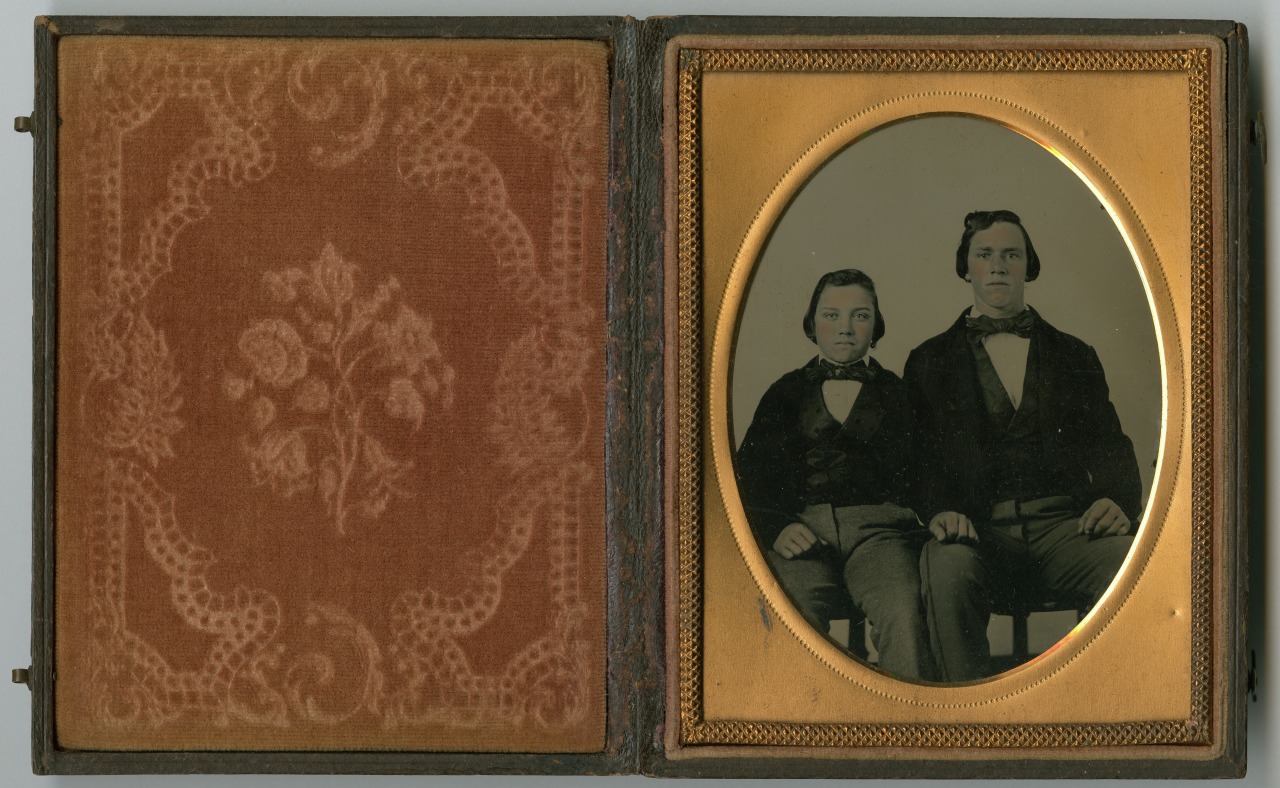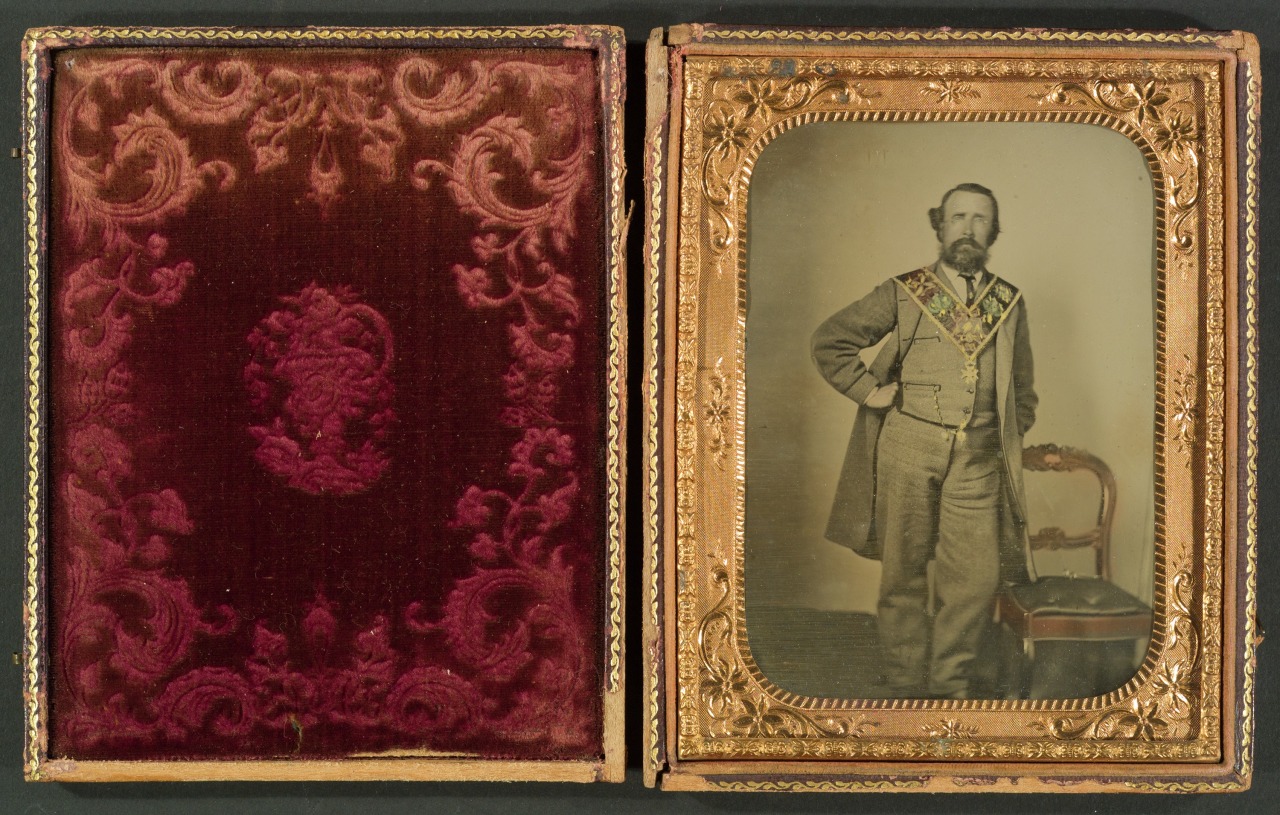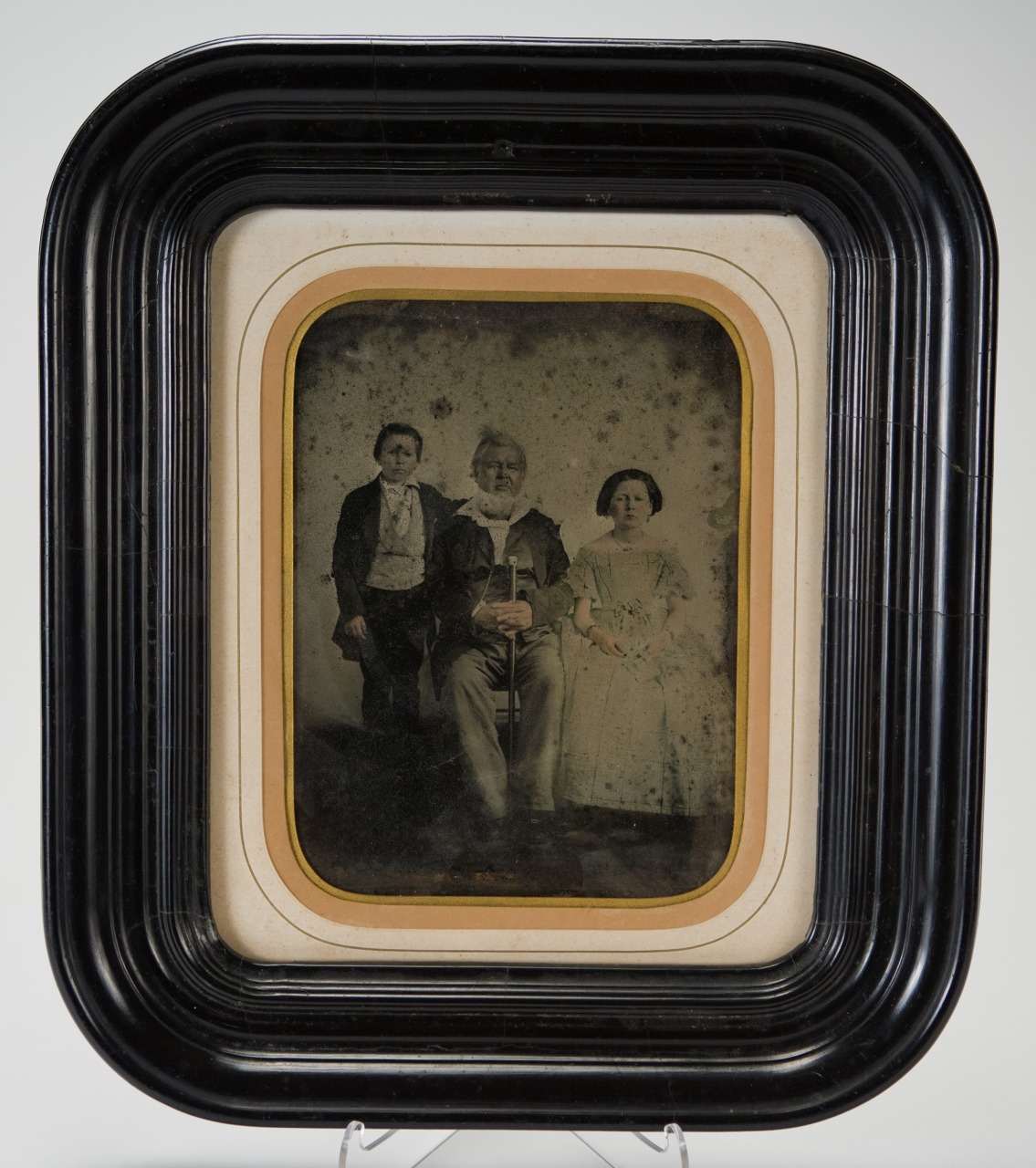Ambrotypes, which resembled but cost less than daguerreotypes, were made using the collodion wet plate process that was also used to make negatives. The name “ambrotype” was devised by Philadelphia daguerreotypist Marcus A. Root in 1855, from the Greek ambrotos, meaning “imperishable.” Although James Ambrose Cutting of Boston received three patents relating to the collodion process, he was not the inventor.
Ambrotypes are made from underexposed or underdeveloped collodion negatives, made via the collodion (wet-plate) process: first, the glass plate must be perfectly cleaned. Next, collodion, a viscous solution of nitrocellulose dissolved in alcohol and ether, combined with potassium iodide is poured onto the glass plate until evenly coated. The glass is then submerged in a solution of silver nitrate, which reacts with the potassium iodide, making the plate sensitive to light. The sensitized plate is then placed in a camera and exposed. After exposure, the plate is developed in pyrogallic acid. A fixer of sodium thiosulfate, or hypo, is necessary to keep the plate from undergoing further exposure. The plate is then washed, dried, and ready for printing.
It was discovered that placing a dark or black background behind the glass plate made the negative appear positive, so users would paint the back of the plate black, place black paper or velvet behind the plate, or even apply the collodion to dark-colored glass, such as ruby glass. Quickly and cheaply, the collodion negative would become an ambrotype.
Ambrotypes were presented in the same small leather, paper, or thermoplastic (“Union”) cases as daguerreotypes, but cost a fraction of the price. Consequently, portrait photography became accessible to those who could not afford daguerreotypes, and the world’s nascent photographic record widened.

Unidentified man and child
sixth-plate ambrotype without case; ca. 1865
by an unknown photographer
The Historic New Orleans Collection, gift of George Jordan, 1977.313.1

The Engelbach family
quarter-plate ambrotype; between 1860 and 1865
by an unknown photographer
The Historic New Orleans Collection, 1981.238.1

Unidentified young men
quarter-plate ambrotype; between 1855 and 1860
by an unknown photographer
The Historic New Orleans Collection, gift of Mr. and Mrs. Charles M. Wolfe, 1980.224.2

Thomas Cripps wearing Masonic collar
half-plate ambrotype; ca. 1855
by an unknown photographer
The Historic New Orleans Collection, 1993.76.4 a,b

Family portrait
whole-plate ambrotype; 1858 or 1859
by Moissenet and Law
The Historic New Orleans Collection, gift of Mary Louise Trammell, 1987.127
